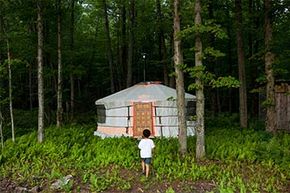A hundred thousand years ago, our Stone Age ancestors were just as "wild" as the animals they tracked and hunted for food and clothing. They fashioned spearheads from sharpened stone and animal bones, carried food in animal-skin bags and primitive pottery, and slept under the stars or in makeshift lean-tos. The business of life was survival and reproduction. It was intense, often desperate, but undeniably human.
If Paleololithic man was wild, then 21st-century man is fully domesticated. Few of us have ever killed our own dinner or foraged for wild foods. We eat processed and packaged meals, sleep in climate-controlled houses, and the closest most of us come to an authentic wilderness experience is watching a survival reality show on TV.
Advertisement
The human rewilding movement is out to change that. At wilderness survival camps and foraging schools around the world, domesticated humans are removing their "leashes" — nine-to-five office jobs, mortgages and the drive-thru window — to discover their wild selves.
Human rewilding is an offshoot of the larger rewilding conservation movement, which aims to restore human-altered ecosystems to their wild and natural state [source: world's largest predators to extinction (like giant sloths, woolly mammoths and giant short-faced bears). As a result, entire ecosystems were knocked out of balance. One of the chief goals of the rewilding conservation movement is to reintroduce large carnivores and herbivores into protected wilderness spaces where that ancient balance can be restored [source: Rewilding Europe].
Human rewilding aims to restore a similar ancient balance inside you and me. The goal isn't to live in caves and dress in beaver pelts, but to more fully realize our human potential. The genes and traits we carry evolved over millennia to help us survive in a world of "horns and tusks and fangs and claws," not cubicles and cable TV [source: Monbiot]. By getting out and truly engaging with nature — even the dangerous and disgusting — we will find life much more thrilling and fulfilling.
Keep reading to learn how to rewild your life by acquiring some basic wilderness survival skills and viewing the world through "wild" eyes.
Advertisement




